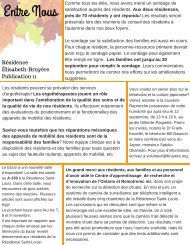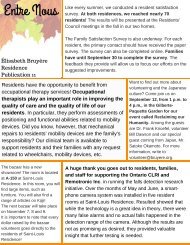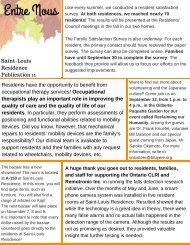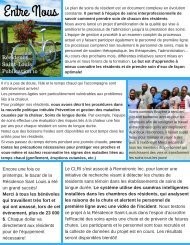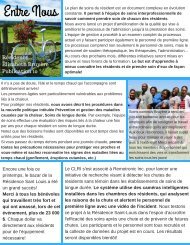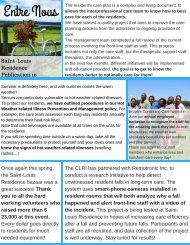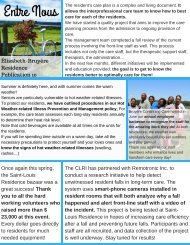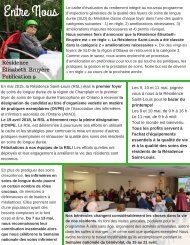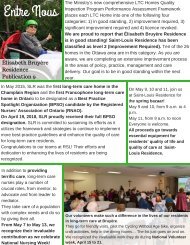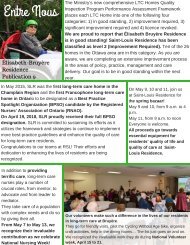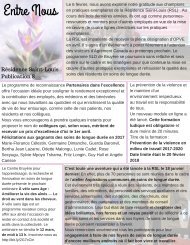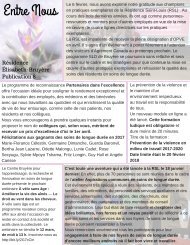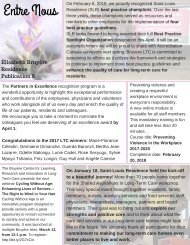Bruyere Reports - Falls RSL
You also want an ePaper? Increase the reach of your titles
YUMPU automatically turns print PDFs into web optimized ePapers that Google loves.
Executive summary<br />
<strong>Falls</strong> are a major public health problem<br />
among seniors. Health Quality Ontario (HQO)<br />
set benchmarks for quality indicators to enable<br />
comparison of performance between long<br />
-term care (LTC) facilities and encourage<br />
quality improvement. The quality indicator<br />
used to monitor falls in LTC is the percentage<br />
of residents who fell in the last 30 days. The<br />
rate of falls at Saint-Louis Residence (SLR) is<br />
higher than the HQO benchmark of nine per<br />
cent.<br />
To investigate the reasons for the high rate of<br />
falls at SLR, we examined available data, conducted<br />
staff interviews as well as an evidence<br />
review on risk factors for falls and the effectiveness<br />
of falls prevention interventions in<br />
LTC.<br />
Available data and staff perceptions showed<br />
that the top two risk factors present at SLR<br />
where actions could be taken are cognitive<br />
impairment and mobility status. Most of the<br />
falls occurred during the day and evening<br />
shifts when residents are awake and active.<br />
Factors contributing to the high rates of falls<br />
included client and environmental factors<br />
such as cognitive impairment, lack of safety<br />
inspection of ambulatory devices, as well as<br />
organization of care factors, e.g., limited occupational<br />
therapy.<br />
<strong>Falls</strong> prevention interventions including falls<br />
risk assessment on admission and after a fall,<br />
multifactorial interventions, client and staff<br />
education, as well as strength and balance<br />
training have been recommended in previous<br />
guidelines. The preventive interventions<br />
where data from SLR identifies actionable<br />
gaps are multifactorial interventions tailored<br />
to client and family needs, as well as strength<br />
and balance training.<br />
Based on the evidence, we recommend the<br />
following strategies to reduce falls rates at<br />
SLR:<br />
1. Improve data for monitoring impact of<br />
changes.<br />
2. Prioritize interventions based on data and<br />
needs; including client and staff education,<br />
falls risk assessment and multifactorial<br />
interventions along with continuing existing<br />
good practices such as vitamin D<br />
and medication review.<br />
3. Communication between SLR and Élisabeth<br />
Bruyère Residence (EBR), as well as<br />
within SLR across different disciplines.<br />
4. Human resources alignment with peak<br />
periods, e.g., increased use of volunteers<br />
during peak periods.<br />
4



